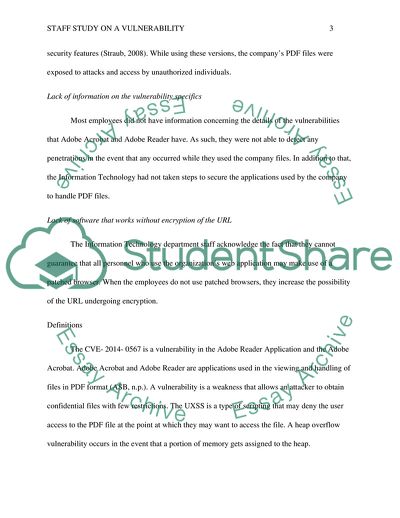Cite this document
(Vulnerability in the Communication System Case Study Example | Topics and Well Written Essays - 1500 words, n.d.)
Vulnerability in the Communication System Case Study Example | Topics and Well Written Essays - 1500 words. https://studentshare.org/information-technology/1852251-staffy-study-on-a-vulnerability
Vulnerability in the Communication System Case Study Example | Topics and Well Written Essays - 1500 words. https://studentshare.org/information-technology/1852251-staffy-study-on-a-vulnerability
(Vulnerability in the Communication System Case Study Example | Topics and Well Written Essays - 1500 Words)
Vulnerability in the Communication System Case Study Example | Topics and Well Written Essays - 1500 Words. https://studentshare.org/information-technology/1852251-staffy-study-on-a-vulnerability.
Vulnerability in the Communication System Case Study Example | Topics and Well Written Essays - 1500 Words. https://studentshare.org/information-technology/1852251-staffy-study-on-a-vulnerability.
“Vulnerability in the Communication System Case Study Example | Topics and Well Written Essays - 1500 Words”. https://studentshare.org/information-technology/1852251-staffy-study-on-a-vulnerability.


